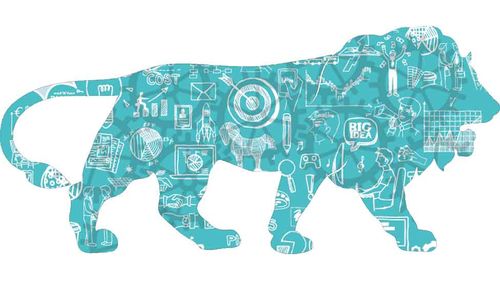If India is to match China in both technology and scale, many bottlenecks will have to be removed. The idea of ‘Make in India’ is not just about internal development, but also effectively countering threats from the outside. In terms of both geography and potential, India’s biggest competitor today is China.
To compete with this economically powerful neighbour, India needs development on multiple fronts. While China has raced far ahead of India, today its manufacturing is slowing down, wages are rising and the labour force is dwindling. On the other hand, the Indian labour force is just coming of age. If we are to match China in both technology and scale, many bottlenecks have to be removed. Apart from the well-known issue of poor infrastructure, there are several areas that need to be tackled on a war footing.
Skills: It is estimated that by 2030, India will have the largest labour force in the world. Yet, the availability of a large workforce alone is not enough. Jobs also need to be created and most importantly, skills have to be developed. ‘Make in India’ seems like the perfect platform to absorb an annual 12 million-strong workforce with jobs. However, unless this workforce is equipped with the required skills, India will miss the bus again. China invested in education and is reaping the benefits. Consider this; in 2004, while China had only eight universities in the world’s top 500, and none in the top 200, the current respective figures are 32, and six. China’s universities are now second only to those in the US in terms of the total research output.
The correlation between the quality of education and the nation’s progress is obvious. The Indian government and the private sector should join hands to align education to practice by encouraging meaningful apprenticeships within industries by amending the Apprentices Act, 1961, to make it relevant in the 21st century.
Multi-pronged reform plan
Over the last two decades, China has striven to transform itself into the world’s second biggest economy, through a slew of reforms, including the mass reallocation of labour from low-productivity agriculture to high-productivity manufacturing. What motivated Chinese workers to slog day and night? This is partly answered by a sociological reason: the people of China and other nations in the Far East have always been disciplined.
A dose of strong-arm enforcement injected into oriental values ensured a disciplined work ethic. By combining worker benefits with relaxation of hiring and retrenchment norms in its labour reforms in 1995, China was well on the way to becoming a manufacturing powerhouse. While China does have unions, they are virtually, without exception, under the control of the All-China Federation of Trade Unions which is controlled by the government and the party (Communist Party of China). Collective bargaining, legal strikes or dispute resolution are non-existent. Here, in democratic India, the present labour laws impede industrial growth. Labour reforms are never easy, as there are multiple stakeholders involved, from workmen unions to politicians and the government.
How did China manage to develop absolute advantage in so many industries? The answer is simple — with the government’s whole-hearted help. State-owned banks give loans to local companies — large or small, at rates as low as two per cent, and local governments across China allocate cheap or free land. In India, funds are grudgingly provided to MSMEs at crippling rates of interest. The export subsidies and incentives granted by the Chinese government helped grow a vibrant manufacturing sector with thousands of small, medium, and large industries, focused on high-volume mass-manufacture aimed at exports. In addition, the market access available to China as a result of its WTO membership, contributed to its impressive trade performance. China also created barriers for imports to maintain huge trade surpluses. For example, products that have passed international quality certifications have to again undergo tests like the China Compulsory Certificate (CCC) for entry into the Chinese markets. Hence, today, China is the shop floor of the world.
In India, on the other hand, myriad rules, regulations and harassment are killing the manufacturing industry. The so-called incentives and subsidies for exports are so difficult to access through the maze of red tape, that manufacturing industries, especially the smaller ones, find them unviable. It is not surprising therefore, that a World Bank report ranks India at 130, and China at 84, out of 189 countries, in terms of the ease of doing business. As a result, Chinese products turn out to be cheaper than the local ones in spite of import expenses, though not necessarily better in quality.
The way forward
While India soared ahead digitally, the manufacturing industry was neglected. The government should now aggressively focus on building robust infrastructure from the foundation, providing support to the industries in the form of low interest loans and subsidies. However, the Chinese model of export-oriented industrialisation is not the way to go. Although China is at the helm of global exports, it is now struggling to boost internal consumption. India has the potential to become a thriving manufacturing hub. There are multiple factors in favour of India; it is up to us to leverage them and race ahead. If all the concerns of the manufacturing sector are addressed, we may well see India and China trading places in the future.
The original article appeared on Deccanherald.
